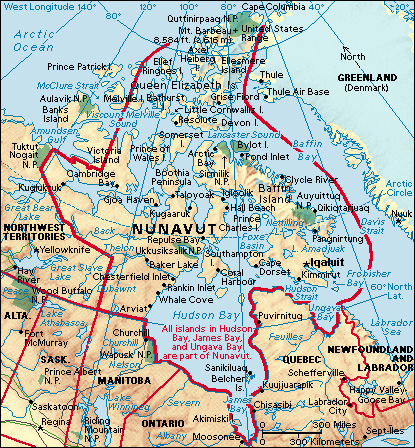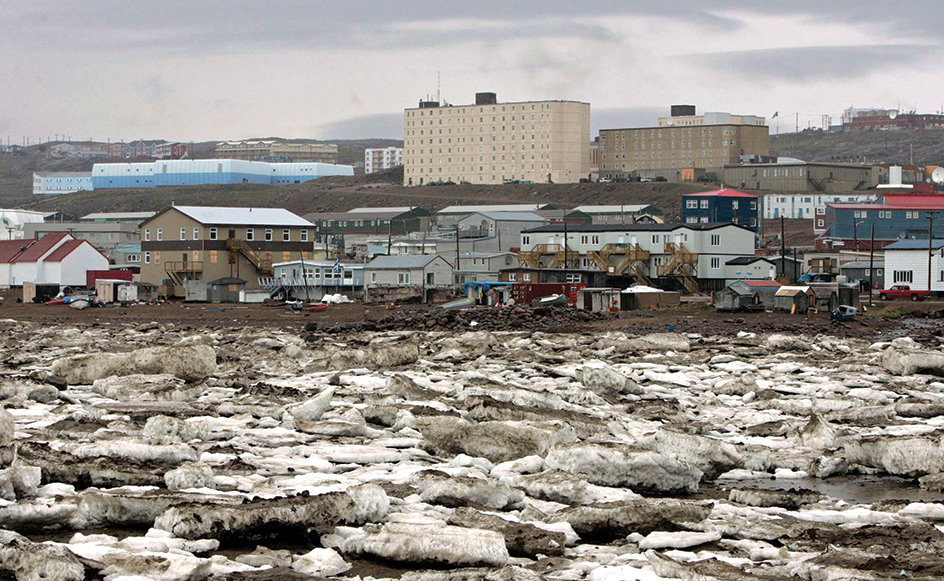Iqaluit, << ee KAH loo iht >> (pop. 7,429), is the capital and largest community of the Canadian territory of Nunavut. Iqaluit lies on the southern coast of Baffin Island. During the winter, Iqaluit receives only four to six hours of daylight, and temperatures can drop to as low as – 49 °F (– 45 °C). Long, sunny days characterize the summertime. Summer temperatures can rise to about 77 °F (25 °C).

Inuit people, who make up a large majority of Nunavut’s population, have fished and hunted in the Iqaluit area for hundreds of years. The town’s name in Inuktitut, an Inuit language, means place of fish. Today, Inuit make up more than half of Iqaluit’s population. They also make up a growing percentage of Nunavut’s civil servants.

In 1576, the English explorer Sir Martin Frobisher became the first European to see Baffin Island. In 1942, during World War II, the United States Army Air Forces established a landing strip in the Iqaluit area. In 1980, what is now Iqaluit was incorporated as the town of Frobisher Bay. It officially became Iqaluit in 1987. Iqaluit was incorporated as a city in 2001.
